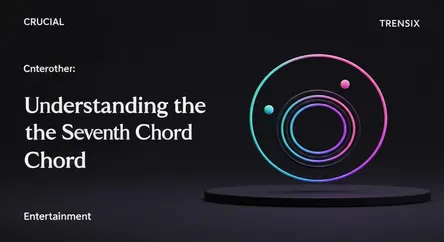Entertainment
Understanding the Seventh Chord

Discover the seventh chord, a four-note powerhouse in music theory. Learn why it's vital in jazz, R&B, and pop, and how it adds emotional depth.
What is it?
A seventh chord is a four-note chord consisting of a root, a third, a fifth, and a seventh. Built by adding one more note to a basic triad, these chords introduce a richer, more complex harmonic color. The most common types are the major seventh (often described as dreamy or lush), the dominant seventh (creating tension that begs for resolution), and the minor seventh (sounding mellow, soulful, or sad). They are foundational elements in genres that move beyond simple harmonic structures, providing depth and sophistication to the music.
Why is it trending?
Seventh chords are perpetually trending because they are the backbone of popular genres like jazz, R&B, neo-soul, and increasingly, mainstream pop. Their ability to create compelling tension-and-release dynamics is a key tool for modern songwriters and producers looking to craft emotionally resonant tracks. As listeners' tastes evolve towards more complex sounds, the use of seventh chords provides the harmonic interest they crave. The rise of accessible music production software has also empowered more creators to experiment with and utilize these sophisticated chords in their compositions.
How does it affect people?
Seventh chords significantly impact a listener's emotional experience. The tension of a dominant seventh chord builds anticipation, making its resolution to a stable chord feel incredibly satisfying. A major seventh can evoke feelings of nostalgia, romance, or peace, while a minor seventh often creates a moody, introspective, or melancholic atmosphere. This harmonic complexity allows music to convey a wider range of nuanced emotions, engaging listeners on a deeper level and making songs more memorable and impactful.